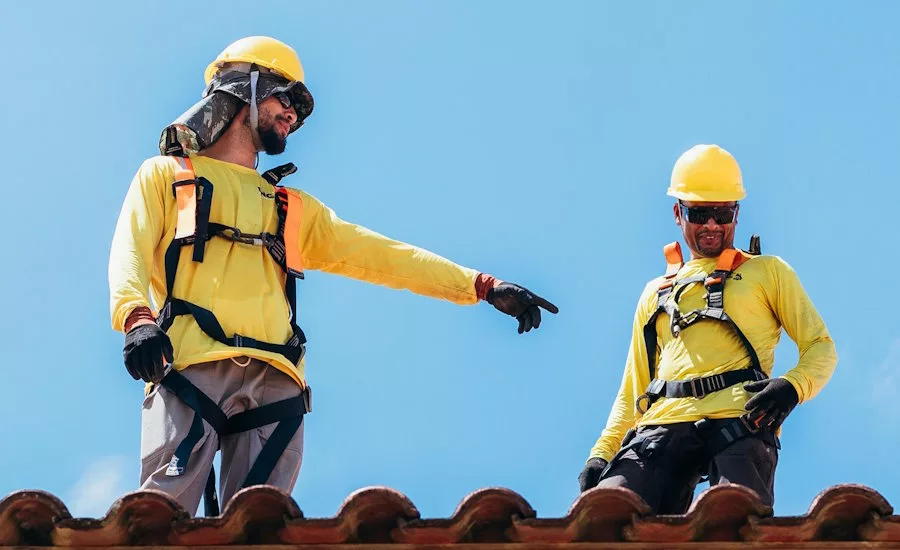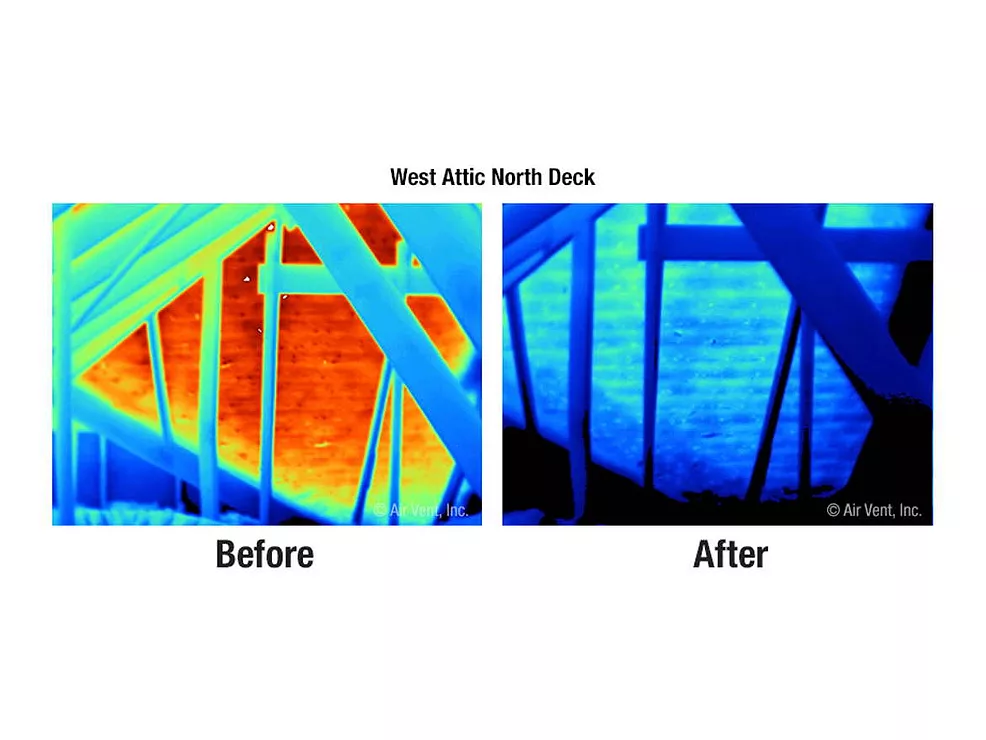Technical Details: Aggregate Surfacing for BURs

Aggregate surfacing has been applied to built-up roof systems for over a century. The aggregate, which typically consists of gravel, crushed rock or blast-furnace slag, is set in a uniform bitumen flood coat over the membrane surface. The flood coat pour is on average 1/8 inch in thickness, making it approximately three times the thickness of a standard interply mopping.
Proper aggregate surfacing requires a uniform and even flood coat of bitumen applied at a rate of 60 pounds per roof square for asphalt systems and 70 pounds per roof square for coal-tar systems. Control of the flood coat is critical to the success of the application. An insufficient flood coat reduces the thickness of the film and the average coverage exposing the bitumen to potential erosion and solar radiation damage. The flood coat contributes to waterproofing protection of the system, but it is not the main element. In this regard, it complements the interply mopping. The primary intent of the flood coat is to adhere the aggregate. Waterproofing protection is reduced by the embedment of the aggregate and air bubbles that become entrapped during the aggregate application.
An important element of the aggregate application is the settlement or nesting of the gravel. This can be maintained through the use of properly sized aggregate and proper aggregate placement. Aggregate should be in compliance with ASTM Standard D 1863, “Standard Specification for Mineral Aggregate Used on Built-Up Roofs,” which states that aggregate should be a minimum of 3/16 inch in diameter and a maximum of 3/4 inch in diameter. Aggregate should be applied at a rate of 400 to 500 pounds per roof square. Undersized aggregate could be a detriment to the system, as the small aggregate particles interrupt the waterproofing film and are too small to provide ultraviolet protection. Oversized aggregate can create voids from interstices between the plies, which can lead to entrapment of silt and potential plant growth.
The primary advantage of aggregate surfacing on built-up roof systems is that it shields the bitumen from damage created by solar radiation. When bitumen is exposed to solar radiation, the chemical oxidation process is accelerated by as much as 200 times. Oxidation contributes to splitting, cracking and “alligatoring” of the bitumen, which ultimately threatens the felt.
Another advantage of aggregate surfacing is that it acts as a resistance to bitumen erosion created by scouring from wind and rain. It also provides improved fire resistance and impact resistance from hail, foot traffic and dropped tools. Industry studies have also indicated that aggregate surfacing provides wind-uplift resistance by adding weight and rigidity to the system, stiffening the membrane and making it less vulnerable to ballooning and undulation. Aggregate also reduces the roof surface temperature to some extent. The reflectivity rate of an aggregate-surfaced roof is 25 percent.
The disadvantages of aggregate surfacing include an added degree of difficulty in finding roof leaks and additional labor (spudding of aggregate from surface) required to repair leaks. On remedial recover applications, the aggregate surfacing must be removed to the best of one’s ability without damaging the membrane. It is critical that all loose aggregate is removed from the site and that it does not this end up in the new interplys.
Code Changes
In recent years there has been a strong movement to eliminate the use of aggregate surfacing for built-up roof systems in high-velocity wind zones. The prevailing claim for these changes is that the aggregate (gravel or stone) becomes wind-borne debris in elevated wind events, which causes subsequent building damage and generates a human safety risk. To this time, there has not been substantial testing that validates these claims. Nonetheless, the concern has resulted in code changes, and a number of U.S. municipalities are banning aggregate-surfaced roofs based on these code changes.The code does not eliminate the use of aggregate systems; it only limits where they can be used. Section 1504.8 of the 2006 edition of the International Building Code (IBC) states:
“Gravel or stone shall not be used on the roof of a building located in a hurricane-prone region as defined in Section 1609.2, or any other building with a roof mean height exceeding that permitted by Table 1504.8 based on the exposure category and basic wind speed at the building site.”
Interpretation of this section of the code indicates that aggregate-surfaced roofs cannot be applied in hurricane-prone regions, which include essentially the Gulf and Atlantic coasts and areas of the country where the basic wind speed is more than 90 mph (such as the whole state of Florida, for example). The code further implies that aggregate-surfaced roofs are limited to application based on building heights in the specific wind zone regions. For instance, aggregate surfacing can be used on a 75-foot building in a 95 mph wind zone if the building has a “B” exposure category. If a building in the same location has a “C” exposure category, then the maximum building height is 20 feet.
As with all building codes, it is up to the state and local levels to adopt and enforce the codes. Codes can be adopted in whole or in part. Some states, such as Florida, have been actively trying to postpone adoption of this section of the code until further testing is available to substantiate or dispute the wind-borne claims. The Florida State Senate has recently passed a bill (SB 2836) that stops the elimination of aggregate-surfaced roofs until such studies are completed.
In anticipation of sweeping code changes, some roofing manufacturers have begun producing light-colored coatings that bind the aggregate in place while also providing reflectivity ratings of 70 percent. These products would allow for the continual use of aggregate - even in high wind velocity zones - while providing the reflectivity required by Energy Star (which might be another future code requirement).
Looking for a reprint of this article?
From high-res PDFs to custom plaques, order your copy today!



